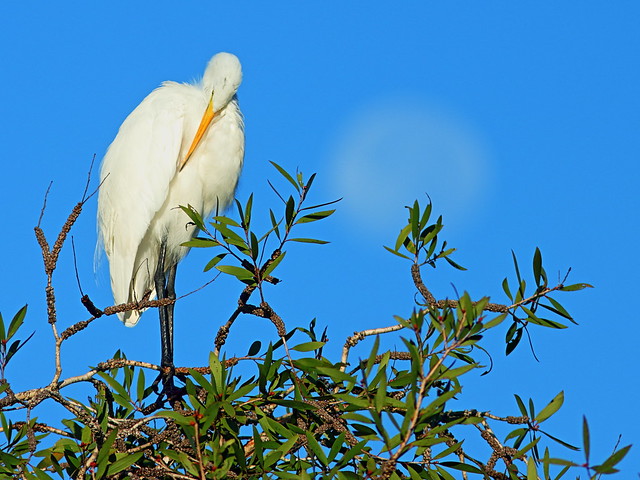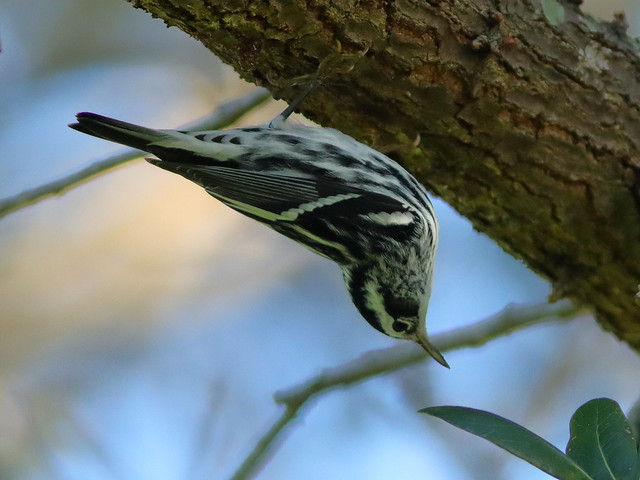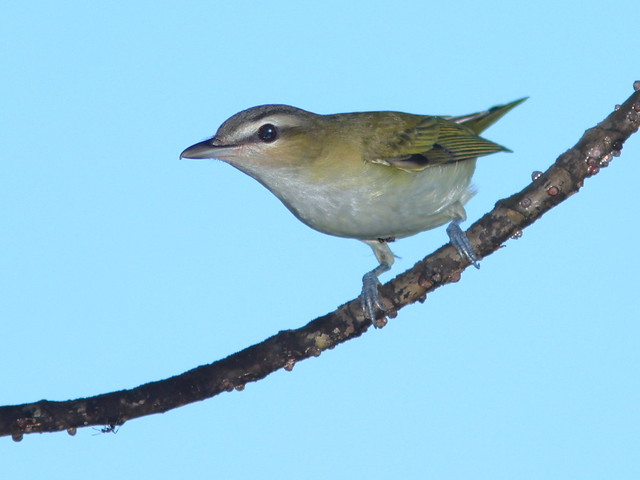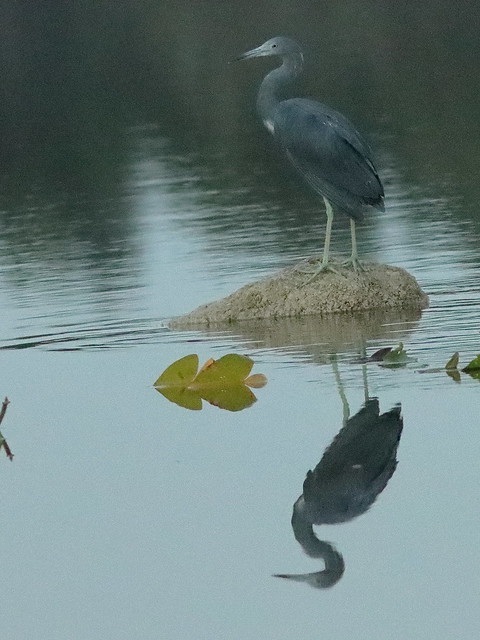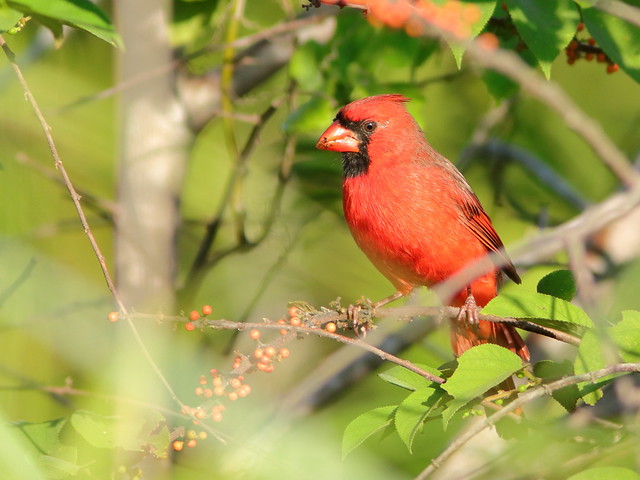Autumn officially arrived and I visited the boardwalk at nearby Chapel Trail Nature Preserve. A Great Egret happened to pose almost directly under the day-old Harvest Moon:
I was surprised at how quickly the Moon drifted down:
Shooting between tree branches, I had to contort to place the Moon behind the egret:
The egret was not impressed and went about preening:
Actually, I had photographed the Moon a few minutes earlier, moved a short distance along the boardwalk and was lucky to look up and see the egret in a treetop:
View from the dock near the beginning of the boardwalk. The wet prairie is now flooded and the spike-rush is flourishing.
Although the morning radar showed heavy migration, birding was very slow. This is the Doppler velocity image at 5:00 AM on September 24. Green echoes are approaching Miami and red are heading away towards The Bahamas and Cuba. Our home is at the small red "+" which seems to be in the heart of the action.
Instead of finding warblers dripping off the trees I logged only a single species. a Prairie Warbler:
A Blue-gray Gnatcatcher was my consolation prize. A distracting dozen or more frolicked in the trees:
A grumpy Anhinga was sunning at the far end of the boardwalk. She protested my intrusion so I backed off after snapping a few images. Her red eyes glistened like jewels:
Non-avian objects of interest included a pair of mating Halloween Pennant dragonflies:
...and a Green Anole:
I had better luck in the Wounded Wetlands near our home. A Female Golden-winged Warbler showed up on September 20, my first ever record of this species in the local patch:
More Blue-gray Gnatcatchers livened up the scene:
A Prairie Warbler hover-gleaned for insects:
Another Prairie Warbler was missing his tail feathers. They should be finished molting and generally only replace tail feathers in pairs. Therefore this may have resulted from a close call with a predator such as a pursuing hawk. As bird banders can attest, some birds will "blow" all their tail feathers when severely threatened or to avoid being captured.
Other warblers included a female Black-throated Blue Warbler, here peering out from Ligustrum blossoms and berries...
..and a drab female or possibly first year male Common Yellowthroat:
Acrobatic Black-and-White Warblers seemed to defy gravity while seeking insects hidden in the bark of a Live Oak:
A Northern Parula warbler was mostly out of sight:
An inquisitive Red-eyed Vireo paid a brief visit:
Oh those eyes! A Brown Thrasher peered out between the leaves:
A migrating male Baltimore Oriole added welcome color to the scene:
Out on the lake, only 5 minutes after sunrise, the Harvest Moon hovered over a swirling cloud (A nice example of the low-light performance of my iPhone 11 Pro Max):
= = = = = = = = = = = = = = =
Linking to:
Skywatch Friday
Weekend Reflections
Saturday's Critters
BirdD'Pot
Camera Critters
All Seasons
Wordless Wednesday (on Tuesday)
Natasha Musing
Our World Tuesday
Please visit the links to all these posts to see some excellent photos on display
________________________________________________



